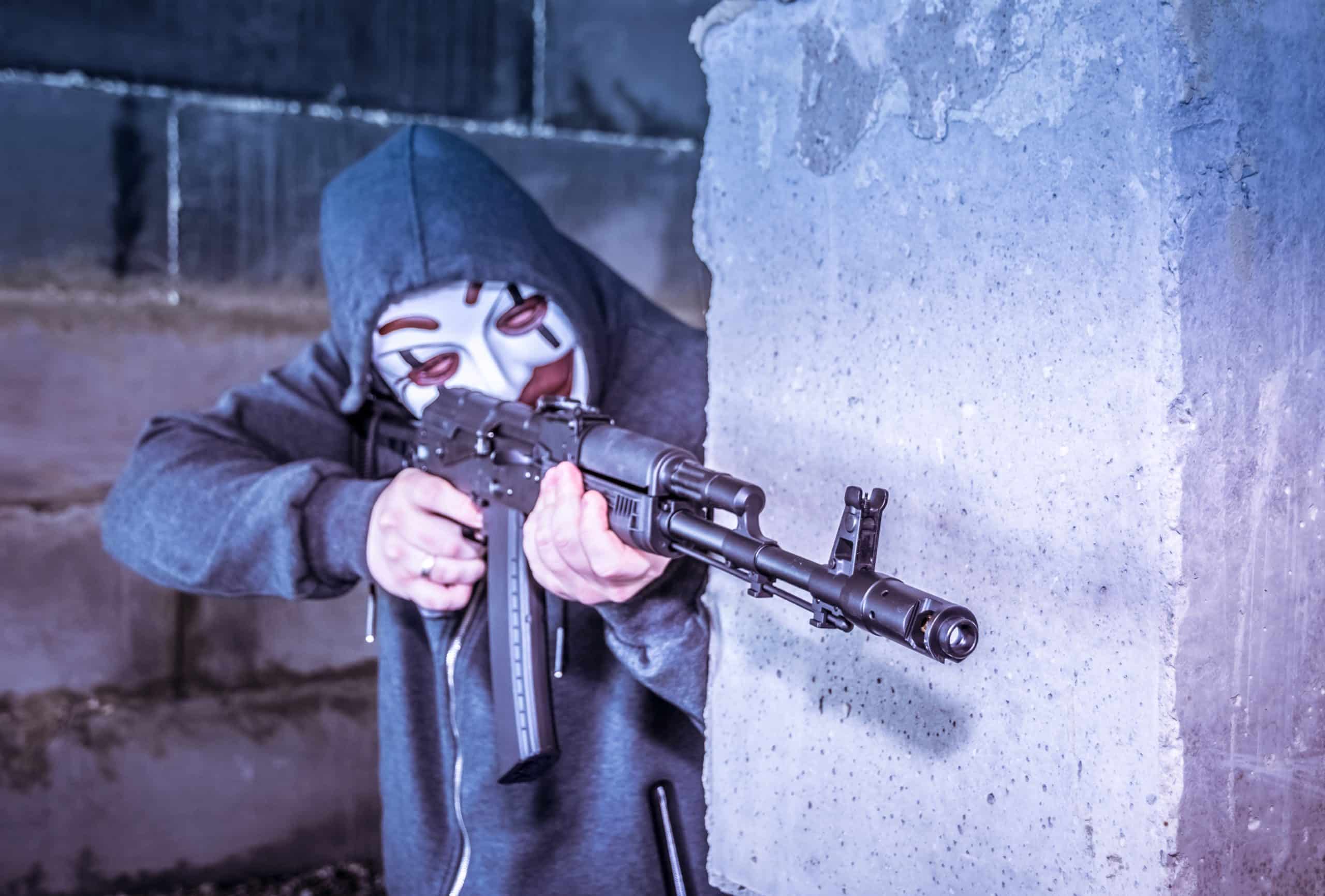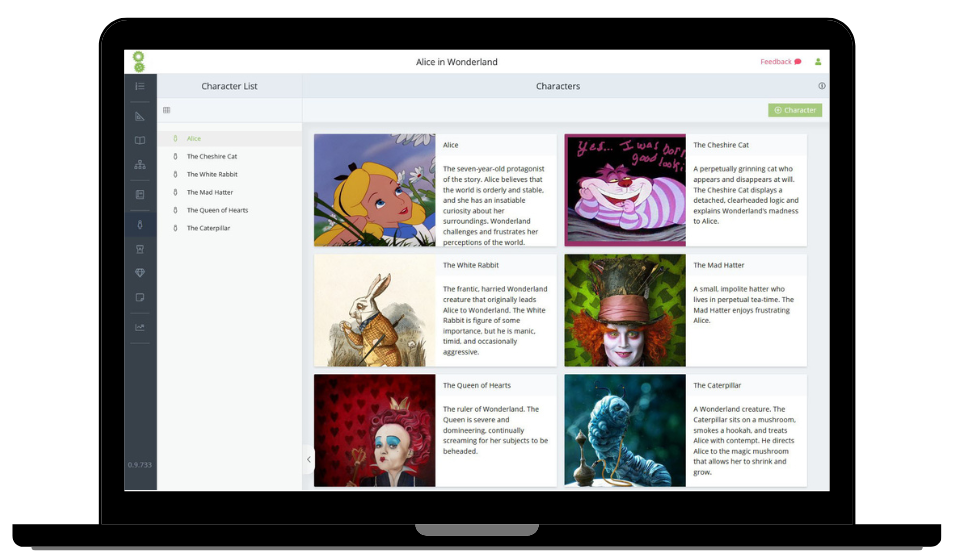
How to Write a Thriller (& Keep Your Readers on the Edge of Their Seats)
Are you itching to try your hand at writing a thriller?
Or perhaps you’ve already written one, or more, but feel that they lack a certain je ne sais quoi?
People love stories that keep them on the edge of their seats, hold them in suspense, and get their hearts racing. And the thriller genre is one of the most popular and bestselling out there.
Writing thrillers is a little different from writing other types of novels. You have to be sure you’ve got all the right ingredients for a story that’s gripping, nerve-wracking, and has the pace of a runaway train.
Because if you miss the mark, your novel could be more of a plodder than a roller coaster.
In this post, we’ll talk about what differentiates a thriller from other, similar, genres, explore some sub-genres of thrillers and analyse elements of a good thriller.
So first, let’s pin down exactly what a thriller is.
What Is a Thriller?
Thrillers really do bring the thrills. They’re fast-paced and suspenseful. Think hanging on the edge of your seat, high-stakes action, with lots of tension and racing hearts, and the feeling of desperately needing to know how the story ends.
In a word, thrillers are exciting. And that poses a few challenges for authors — because in order to deliver the excitement your readers crave, you will need to master the arts of suspense, dramatic tension, pace, shocking but satisfying plot twists, and much more.
A good place to start to understand exactly what makes a thriller a thriller, is to see how it differs from other, similar genres.
Thriller vs Mystery vs Suspense vs Horror
There tends to be a lot of confusion between thrillers, mysteries, suspense and horror. It’s understandable, as genres can be quite fluid. They certainly overlap and each one often contains elements of the others.
There are, however, a few features which differentiate these types of stories:
Thriller
Thrillers are defined by their fast pace, constant state of danger, high stakes, and that edge-of-your-seat feeling.
In most thrillers, a villain or some external circumstances drive the plot and the protagonist reacts and responds. The main character is often acting to stop a crime or tragedy that has yet to occur.
Suspense
In suspense novels, the sense of worry or anticipation is high because the reader often knows information the hero does not. Suspense stories are slower-paced, ratcheting up the tension as they go along.
Mystery
In a good mystery, the reader is trying to solve the puzzle alongside the hero, and the puzzle is usually: Who committed the crime? People read mysteries because they like to solve these puzzles, so these stories don’t have to be so fast-paced, high stakes, or violent.
Horror
Where a thriller wants to excite you, a horror wants to scare you. There is usually less mystery about the evil antagonist and their motivations.
It’s often as simple as a gruesome monsters with a single minded desire to kill. There is a lot more gore in horrors, and scenes designed to make you want to slam the book shut and hide behind the sofa.
Now that you know how thrillers differ from suspense, horror or mystery novels, let’s look at some of the various types of thrillers.
Thriller Subgenres
There are many categories of thrillers (some of which may be a little questionable as official sub-genres) but let’s look at a few of the most popular ones.
Psychological Thrillers
Psychological thrillers tend to revolve around a cat-and-mouse between a highly intelligent psychopath and a detective or other good main character trying to stop and/or catch them.
Examples:
- The Girl on the Train by Paula Hawkins
- The Girl with the Dragon Tattoo by Stieg Larsson
- Gone Girl by Gillian Flynn
Action Thrillers
Action thrillers lean more towards action and less toward suspense and mystery. There’s lots of running, shooting, and car chases.
But action thrillers differ from regular action stories in that they’re more serious, with fewer jokes and less comedy relief. And they should still have high stakes.
Examples:
- Jaws by Peter Benchley
- The President’s Daughter by Bill Clinton and James Patterson
- Angels and Demons by Dan Brown
Spy Thrillers

Even the term spy practically shouts “international intrigue”.
The spy aspect works well with thrillers, because you already have built-in danger, top-level secrets and some of the highest stakes imaginable, especially when it comes to preventing wars or other man-made calamities.
Examples:
- Casino Royale by Ian Fleming (or any James Bond, really)
- The Bourne Identity by Robert Ludlum
- The Secrets We Kept by Lara Prescott
Legal Thrillers
The protagonist in legal thrillers is usually a lawyer, and the stories often involve an investigation and courtroom proceedings.
The lawyer typically gets involved on a much more personal level than they normally might, with their loved ones and their own life ending up in danger.
There is often a powerful evil authority such as a corporation or the mafia involved, as well as themes of good against evil and innocence prevailing against injustice.
Examples:
- Anything written by John Grisham, who arguably created this entire sub-genre
- Presumed Innocent by Scott Turow
- Legal Tender by Lisa Scottoline
So what makes a well-written thriller?
Elements of a Strong Thriller
Thrillers need many of the same things that are required by all novels — a believable goal or objective, great characters, and compelling conflict.
So if you’re writing a thriller, you’ll need to include all those elements.
But there are a few additional aspects which are much more specific to thrillers that you’ll also need to get to grips with if you’re going to take your readers on the ride of their life.
Suspense
Most good stories will contain at least some suspense.
We always want to keep readers guessing and turning pages, no matter the genre.
But suspense is an absolute necessity in thrillers, and you can’t be wishy-washy about it — you have to grip your readers by their pounding heart, and not let go. Keep your readers desperate to know what’s going to happen next.
So how can you do this? Here are three techniques:
Withheld Information
In a good thriller, your readers won’t know all of the facts and circumstances. You can use this to draw them in.
For example, say your protagonist’s husband turns up dead. That would be dramatic and emotional.
But you could build more suspense by withholding the information about whether he’s dead or not. If instead, he just goes missing, but the protagonist suspects he might be dead or in danger, then you’ve got drama, emotion and suspense.
Or, as Steven James puts it far more succinctly:
‘A murder is not suspense. An abduction with the threat of a murder is.’
Cliffhangers

Many thriller authors use cliffhangers to compel readers to keep reading into the next chapter. After a lot of suspenseful build up, they stop the scene just before the resolution, so readers have to start the next chapter to find out what happens.
Good cliffhangers supply a satisfying resolution after using a cliffhanger. Poor cliffhangers use it as a cheap trick and then don’t deliver.
As Brandon Sanderson puts it, a cliffhanger could be,
‘And then there was a knock at the door.
A good resolution would be that the visitor was the long-lost father with important information that’s relevant to the story and character arc.
A bad resolution would be that it was the pizza guy, and then the story carries on.’
The Reader Has Info the Hero Does Not
If the reader knows the antagonist has laid a trap the hero is about to obliviously walk into, they will be much more stressed and anxious than if they are also blissfully ignorant.
Study this excellent article on the secrets to creating and sustaining suspense, which include foreshadowing and making — and keeping — your promises.
Pace
Another critical element of a thriller is pace.
One key to maintaining a good pace is creating a ‘ticking clock’ — a deadline by which the characters must complete their difficult task – otherwise something terrible will happen. Without a ticking clock, the characters are free to continue at a leisurely pace.
Another key is keeping the timeline as compressed as possible, without breaking the story.
For example, if some aspects of a scene are taking a couple of days, could they be squeezed into a single day? ake everything happen as fast as you can get away with.
One final aspect of pace is running. There’s usually a lot of it in thrillers. *wink*
High Stakes
Will the family get to the dance competition on time? Will the protagonist get the promotion they’ve been vying for? These situations aren’t really high stakes enough for a thriller.
Thrillers tend to have life or death stakes at minimum — there are quite often kidnappings or missing people… who are in grave danger.
But the stakes will often be even higher than the life or death of individuals. It could be an entire nation or planet in danger, through genocide, potential collapse of government or weapons of mass destruction.
Plot Twists and Turns
Well-written thrillers will include at least a few surprising and unexpected developments. These include:
Red Herrings
Good thrillers skillfully make readers jump to the wrong conclusion, usually by having everyone behaving suspiciously — even if they’re innocent of the main crime.
Evidence often points the finger of blame at someone, only for there to turn out to be a perfectly reasonable explanation for it.
Secrets
People behaving suspiciously will have secrets, and over the course of the story these secrets will come to light. Some of the secrets will be very dark, and may be causing people to do bad things in order to cover them up.
Betrayal
Betrayal is very common in thrillers, since it so naturally intertwines with both conflict and secrets.
Obstacles / Conflict
As in all fiction, you need obstacles and conflict. The hero is trying to achieve their goal, and there are lots of complications that stand in their way.
In thrillers, it’s particularly important that the obstacles and conflicts rapidly increase in stakes, risk and danger, so the thrills are constantly being ramped up.
The Techniques of a Thriller in Action
We’ve put together this little vignette to show you some of these techniques in action…
The setting is this: our hero has to reach an important politician to warn her that there are poisonous chemicals contained in a letter she was sent.
Thrilling elements: life or death stakes (really, higher than life or death stakes as the politician represents authority and order), ticking clock (arriving before the letter does.)
The hero arrives at the building to see the post van leaving — so the post is already in the building.
Thrilling element: ticking clock counting down (post van leaving).
Hero races inside, but is stopped by security at reception, who don’t believe the story about the post. Hero may even see the post cart trundling into the elevator, watch the doors close, and see the lights marking the floors lighting up.
Thrilling elements: obstacles (security guards), ticking clock (elevator lights).
The hero pushes past security, who shout and chase after him, as he bursts into the stairwell and races up the stairs
Thrilling elements: conflict (security guards), obstacles (the stairs), pace (running).
Our hero rushes out, panting, onto the correct floor, but the politician’s PA tries to block him. The protagonist demands to know if the post has arrived.
Frowning, the PA says it just went in. The hero shoves through and bursts into the office just as the politician lifts up the poison-filled letter and the letter opener.
The hero screams “stop!” just as he realises the politician is none other than the secretive woman he got chatting to at the bar the other night.
Thrilling element: obstacles (PA), plot twist (he recognises the politician).
Notice how the elements work together to raise the excitement levels?
How — and Why — to Analyze Thrillers
One of the best ways to learn about the craft of writing is to read the masters.
So if you want to write thrillers, pick up a handful of your personal favourites, read them again and then answer the following questions:
- What sub-genre of thriller is this?
- How does the author create suspense and dramatic tension?
- What are the stakes through the beginning, middle, and end of the story?
- How does the writer apply a ticking clock?
- What plot twists are there?
- What elements are common to this sub-genre?
The more thrillers you read, the more you’ll learn why the best ones work so well, and you’ll find plenty of inspiration for your own stories.
Are You Ready to Write Your Thriller?
Once you know the elements of good thrillers and learn how to combine them to make a strong, fast-paced story, you’ll be as unstoppable as your novel’s heroic main characters.
So immerse yourself in the stories that get your blood pumping. Notice what elements the authors have included to make you feel that way, and get in the habit of analyzing authors and stories you’d love to emulate.
And when you’re working on your own novel, make it bursting with thrilling elements, including those high-pressure ticking clocks, life-and-death high stakes, and incredible plot twists.
Inspired? Excellent! Check out the Novel Writing Roadmap and start planning your thriller today.
Unlock your writing potential
If you liked this article by the Novel Factory, then why not try the Novel Factory app for writers?
It includes:
- Plot Templates
- Character Questionnaires
- Writing Guides
- Drag & Drop Plotting Tools
- World Building resources
- Much, much more

